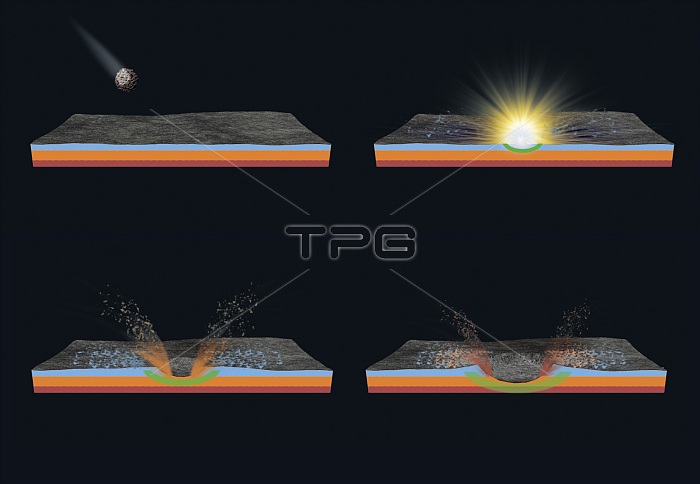
Crater formation in the solar system, illustration. At upper left, an incoming meteor is about to impact a surface on a solar system body that lacks an atmosphere. This could be the Moon, or a minor planet or large asteroid. The surface layers (coloured) are shown from shallowest to deepest: blue, orange, red. The impact (upper right) ejects near-surface materials with high energy. At lower left, deeper material is ejected at a steeper angle as the crater (green shockwaves) is formed. This results in a layered ejecta blanket (lower right) surrounding the crater, with the deepest material being the shortest distance from the crater due to the steeper angle it is ejected at. The ordering of the layers is reversed in the ejecta blanket, from deepest to shallowest: red, orange, blue.
| px | px | dpi | = | cm | x | cm | = | MB |
Details
Creative#:
TOP25086391
Source:
達志影像
Authorization Type:
RM
Release Information:
須由TPG 完整授權
Model Release:
N/A
Property Release:
N/A
Right to Privacy:
No
Same folder images:

 Loading
Loading